Key air pollutant emissions targeted for reductions and monitored under EU legislation continued to decline across most EU Member States according to the latest data assessment published by the European Environment Agency (EEA) today. However, reducing ammonia emissions remains a problem.
In 2022, 16 Member States met their respective 2020-2029 national emission reduction commitments under the EU’s National Emission reduction Commitments Directive (NECD) for each of the five main pollutants (nitrogen oxides, non-methane volatile organic compounds, ammonia, sulphur dioxide and fine particulate matter), according to the EEA assessment. Eleven Member States failed to do so for at least one of five main air pollutants.
The EEA briefing is based on the latest available data reported by Member States in 2024 for their 2022 emissions. It describes the progress made towards reducing emissions of the five main air pollutants regulated under the directive. It presents an assessment of Member State performance against the emission reduction commitments for 2020-2029 as well as their progress towards achieving the more ambitious reduction commitments that will apply from 2030 onward.
Future progress
Reducing ammonia emissions remains the biggest challenge: nine Member States need to cut their 2022 emission levels to fulfil their 2020-2029 reduction commitments. The agriculture sector is the principal source, responsible for 93% of total ammonia emissions according to the EEA assessment. Ammonia emissions have decreased only slightly in many Member States since 2005 and in some cases have increased.
Achieving further reductions for 2030 and beyond will be a significant challenge for nearly all EU countries and for almost all air pollutants. The reduction over time for some pollutant emissions is now levelling off. One exception is sulphur dioxide where 22 Member States are already compliant with their 2030 reduction commitment.
The EEA assessment is based solely on data provided by Member States and does not constitute a compliance check which is undertaken by the European Commission. The numbers presented here may also be subject to change in relation to the result of ongoing quality checks being undertaken.
Reporting under UNECE Air Convention
Today the EEA also published the annual European Union emission inventory report 1990-2022, under the Convention on Long-range Transboundary Air Pollution (UNECE Air Convention), which shows a continued downward trend in emissions for most main air pollutants from 2005 despite economic growth over the same period.
The EEA report also assesses the air pollutant emissions reduction commitments under the Gothenburg Protocol. These emission reduction commitments set in the Gothenburg Protocol were transposed into EU law by the Directive on National Emission Reduction Commitments.
Notably, among the regulated pollutants with an emission reduction commitment, sulphur dioxide (SO2) emissions were reduced the most across the EU. In 2022, emissions were 81% lower than in 2005.
Pollutants addressed in the report are the five main air pollutants (NOX, NMVOCs, SO2, NH3 and PM2.5) but also others such as heavy metals, black carbon and persistent organic pollutants.
Background
Under the National Emission reduction Commitments (NEC) directive 2016/2284, EU Member States are required to meet national commitments to reduce emissions for these five air pollutants to deliver clean air for human health and the environment.
The air pollutants have significant negative impacts on human health and the environment, which is why they were included within the scope of both the Gothenburg Protocol to the Convention on Long-range Transboundary Air Pollution (UNECE Air Convention) and the NEC Directive.
The EEA analysis is based on the latest air pollutant emission inventory data, as reported in 2024 by Member States both under the Directive and the UNECE Air Convention.






